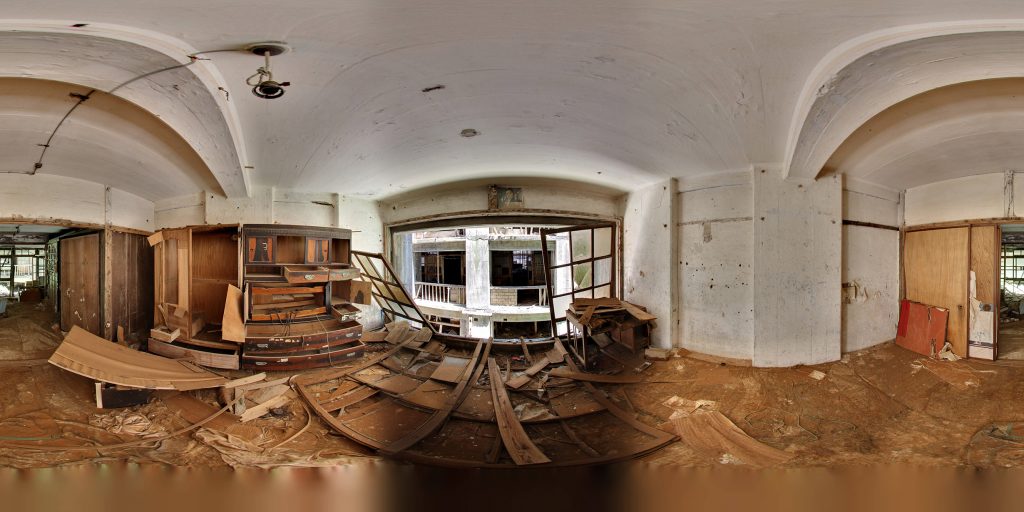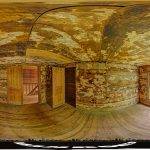Hashima Island
Take a look around the abandoned Hashima Island with amazing 360-degree panoramic photography by the Google Maps Street View team. Do you like urban exploring? Here is a map with tons of GPS locations for you to get out and explore.
Images captured by Google Maps.
The Rich History of Hashima Island
Just off the South West coast of Japan sits Hashima Island, one of 505 uninhabited islands in Nagasaki. The island was not always uninhabited. The small 61,000 square meter island once had a booming economy, with the Mitsubishi coal mining operation at the heart of operations. At its peak, the island housed over 5,000 people making it the most densely populated city in the world at the time.
The island, often called Gunkanjima or Battleship Island for its resemblance to a Japanese battleship, still sits abandoned with structures collecting dust as they are reclaimed by nature. What happened to this once-booming small island, and why was it abandoned?
The History of Hashima – The Industrialization of Japan
Hashima island has a long history in the industrialization of Japan. Coal was first discovered in 1810, but industrial mining only began in the late 1800s. Soon the island was purchased by Mitsubishi Corporation due to the rich submarine coal deposit. Beneath the island, over 2,000 feet of tunnels stretch under the earth to harvest the coal powering Japanese industrial expansion.
Over the years, the island was built to support the rapid increase in the production and mining of coal mines. Large residential buildings, industrial buildings, and high sea walls were produced to support the coal mining operations. Half the island was dedicated to coal mining operations. The other half featured a mini city with apartments, a school, a hospital, and Buddhist and Shinto shrines to create a habitable and comfortable home for managers, workers, and families of the coal mines.
In the early 1930s and through WWII, the Japanese military used the island to put Chinese prisoners of war and Korean citizens to work as forced laborers. The harsh conditions laborers worked in causing the death of over 1,000 workers as a result of malnutrition, unsafe conditions, and long working hours.
In 1974, the coal eventually ran out, and Mitsubishi was forced to close the mines. Without the coal mining operations, the island was no longer a viable economy, and it was promptly evacuated. The island has remained abandoned ever since, and the buildings and structures that were once standing have begun to crumble.
The island was unable to be visited by people until 2009 when a new boat dock was constructed to allow sightseeing tours to dock on the island. The tours of the island were short and only expanded to a small area of the island. Groups intentionally avoided getting too close to any buildings due to the risk of collapse.
In 2015, UNESCO officially designated the island as a world heritage site due to its role in the Japanese Industrial Revolution. Visitors and urban explorers can take a ferry from Nagasaki for a guided tour of much of the island. Some areas are still considered dangerous and are off-limits to the general public.
The history of Hashima Island is rich, complex, and fascinating. It’s truly a powerful place to visit to experience the incredible architecture that was once a testament to Japanese industrial growth and development that now belongs to nature.

360-degree panoramic image captured on Hashima Island of the coast of Japan. Image credit: Google Maps 2013
Other abandoned locations you might find interesting include the village of Zalissya, the Shaw’s Convenience store, an abandoned farm house in central Florida, or the abandoned Crabtree Falls Visitor Center in North Carolina.
Click on a state below and explore the top abandoned places for urban exploring in that state.





